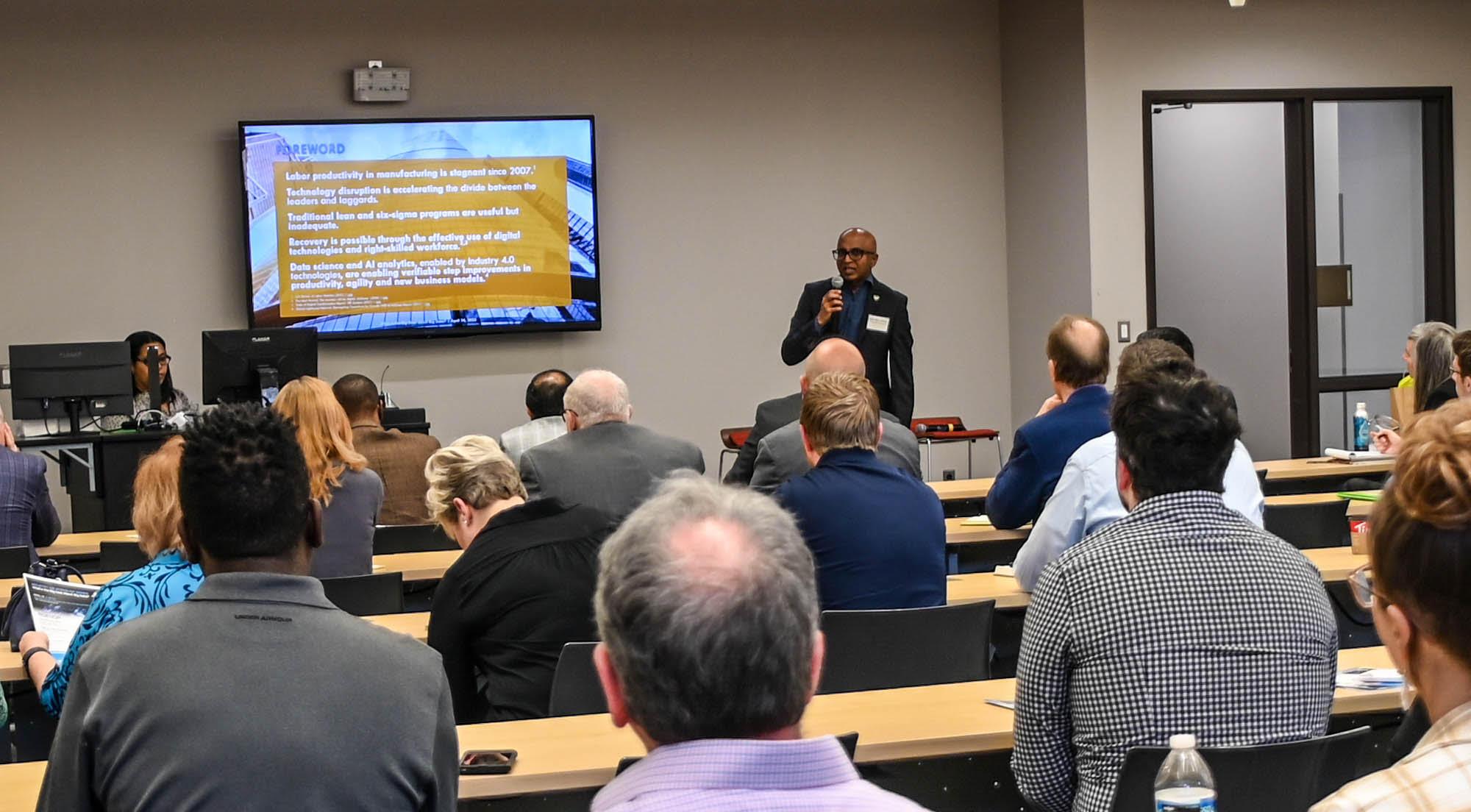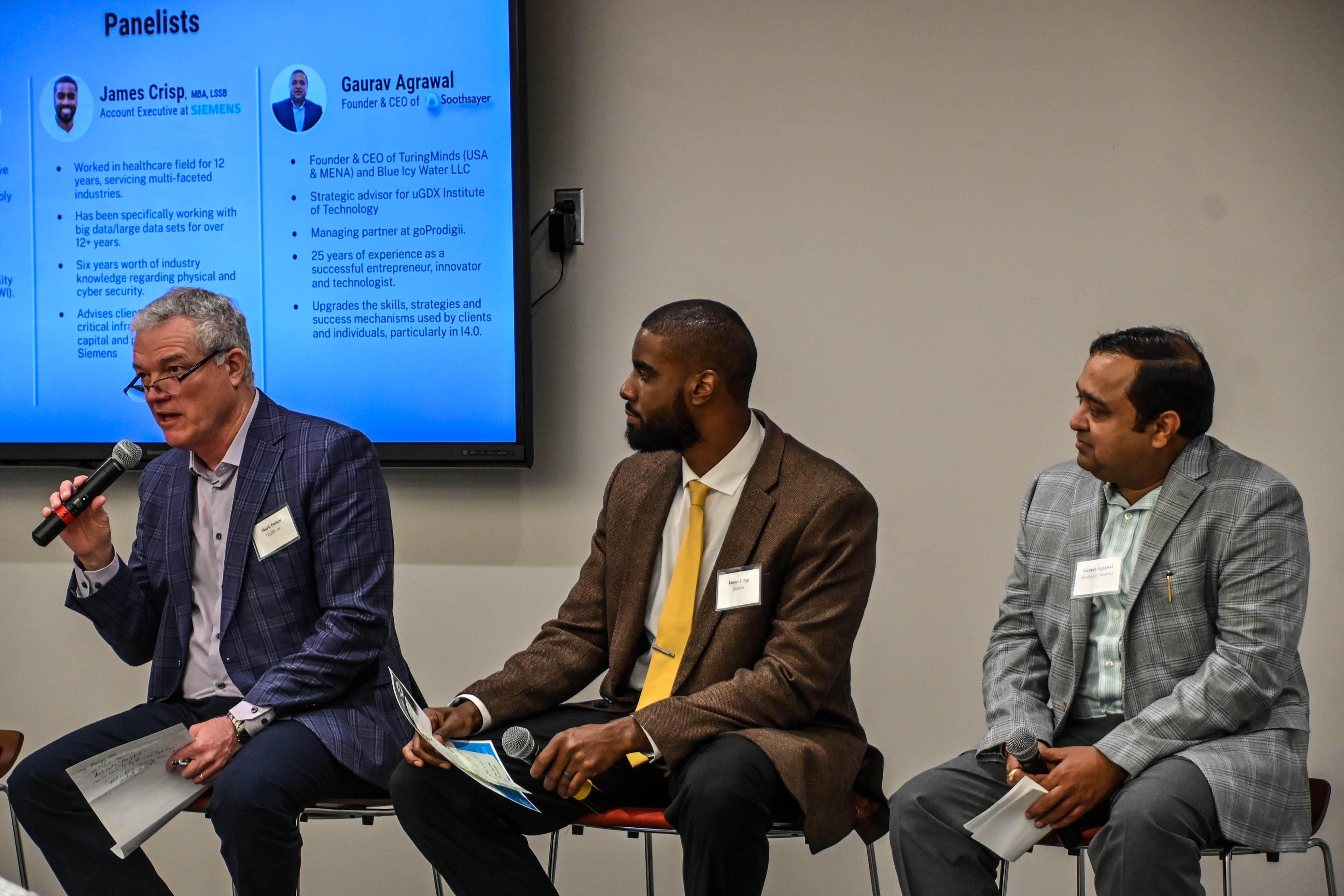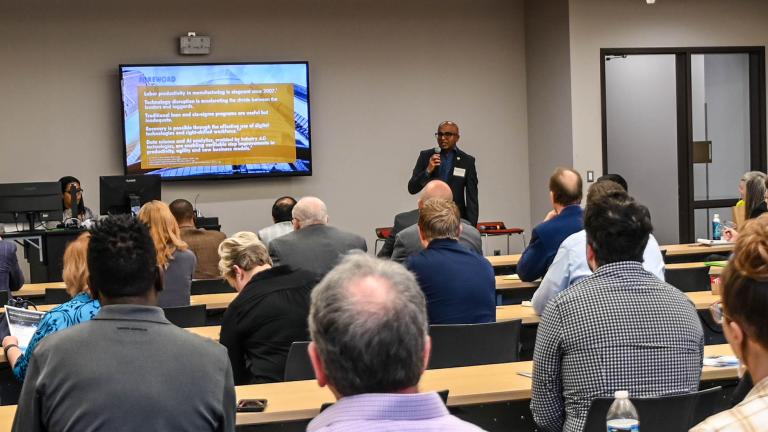In the world of Big Data, the United States is still little data.

Whether it be lack of technology, lack of capital, or lack of knowledge, the United States is falling behind in its ability to use Big Data to run its businesses more efficiently.
Ratna Babu Chinnam, the chair and founding director for industrial and systems engineering at Wayne State University, was the keynote speaker for Macomb County’s second Industry 4.0 workshop titled “What’s the Big Deal about Big Data?” The workshop was presented by the Macomb County Department of Planning and Economic Development (MCPED) and held at the Advanced Technology Education Center in Warren.
Chinnam sounded the alarm about our country’s lack of Big Data use.
“Most of the businesses that have mastered this space

are not in Michigan. They are not in the United States,” Chinnam said. “I have yet to find a lot of companies around us who have mastered the process of collecting the right kind of data. We need to do a better job of liberating technology. We need to do a better job of planning with real-time visibility.”
Chinnam said the Midwest is still quite a bit behind the rest of the world. The health-care industry, he said, is a decade behind. Labor productivity in manufacturing has been stagnant since 2007, according to the Federal Bureau of Labor Statistics. And technology disruption is accelerating the divide between the haves and the have nots. And the COVID-19 pandemic showed how vulnerable things like supply chains are vulnerable to disruptions.
Those who are doing it right, Chinnam said, are called “lighthouse factories.” Lighthouse factories are showing immediate, transformational results in growth, cost and sustainability. Unfortunately, many are in China and portions in Europe. None are in the United States.
So just what is Big Data? Essentially, Chinnam said, it is the practice of changing data into analytics, analytics into numbers, and numbers into value. The values are used to make better decisions, come to conclusions faster and have decisions with better outcomes.
According to Chinnam, the concept is not new. It has been around since World War II. Seventy years of building data analytic methods. The only difference is there is more data than ever before. Big Data is now everywhere. Chinnam said there has been more data created since COVID-19 than all the history before it.
Data science and analytics enabled by Industry 4.0 technologies are enabling improvements in productivity, agility and new business models. Unfortunately, only 13% of U.S. firms have embarked on I4.0 technologies.
The biggest roadblocks to adoption of I4.0 technologies like Big Data are lack of awareness, lack of understanding for data sciences and technology, skills and knowledge, and funding and resources.
The workshop also included three panelists who talked about incorporating Big Data methodologies into current manufacturing operations. All said incorporating and maximizing the use of Big Data in any business takes time, often years. And while the use of Big Data involves new technologies, it’s mainly about changing the culture of the workplace.
Mark Dolsen, the president of TRQSS in Ontario, Canada, said the best solution is often what the user on the shop floor wants to use. If a user has been working the same job for 25 years with successful outcomes, he may be resistant to change. And if he refuses to use the new Big Data technology, or doesn’t use it properly, that technology, and the costs associated with it, are wasted.
Gaurav Agrawal, the founder and CEO of Soothsayer, said that’s why it’s important to invest time in training – from the managers on down to the floor workers. Managers must have knowledge and confidence in the analytics. Processes must be able to accommodate advancements in analytics, and end users must be included. Agrawal said 80% of the fails are not due to the technology, but rather other human factors.
Nonetheless, the technology is important. And choosing the right technology to implement into the process and prevent data from siloing is crucial.
“You don’t want to find out you bought Beta, when everyone else is using VHS,” Dolsen said.
But there is hope on the horizon. Chinnam said of new enterprises, 84% have launched advanced analytics and Big Data initiatives to bring great accuracy and accelerate their decision making. And more than one-third of those enterprises say this area is their top priority for advanced analytics and Big Data investment.
Being open-minded to the use of Big Data and having leaders who understand the space and develop the talent in teams to utilize it.
As the analytics and Big Data plan is implemented, it then needs to mature while the culture changes in the plant.
Chinnam said the three stages of maturity include:
- Descriptive analytics – What happened? How many, how often, where? What exactly is the problem? What actions are needed? Why is this happening?
- Predictive analytics – What if these trends continue? What is likely to happen?
- Prescriptive analytics – What is the best that can happen? How can we make it happen?
Macomb County’s next I4.0 workshop, “Virtual Reality/Augmented Reality,” is set for June 15 at the Velocity Center in Sterling Heights.
To learn more about the workshop series, go to Macomb Next Industry 4.0 project, call 586-469-5285 or email planning@macombgov.org.
Don Gardner is a communication specialist for the Macomb County Department of Planning and Economic Development.







